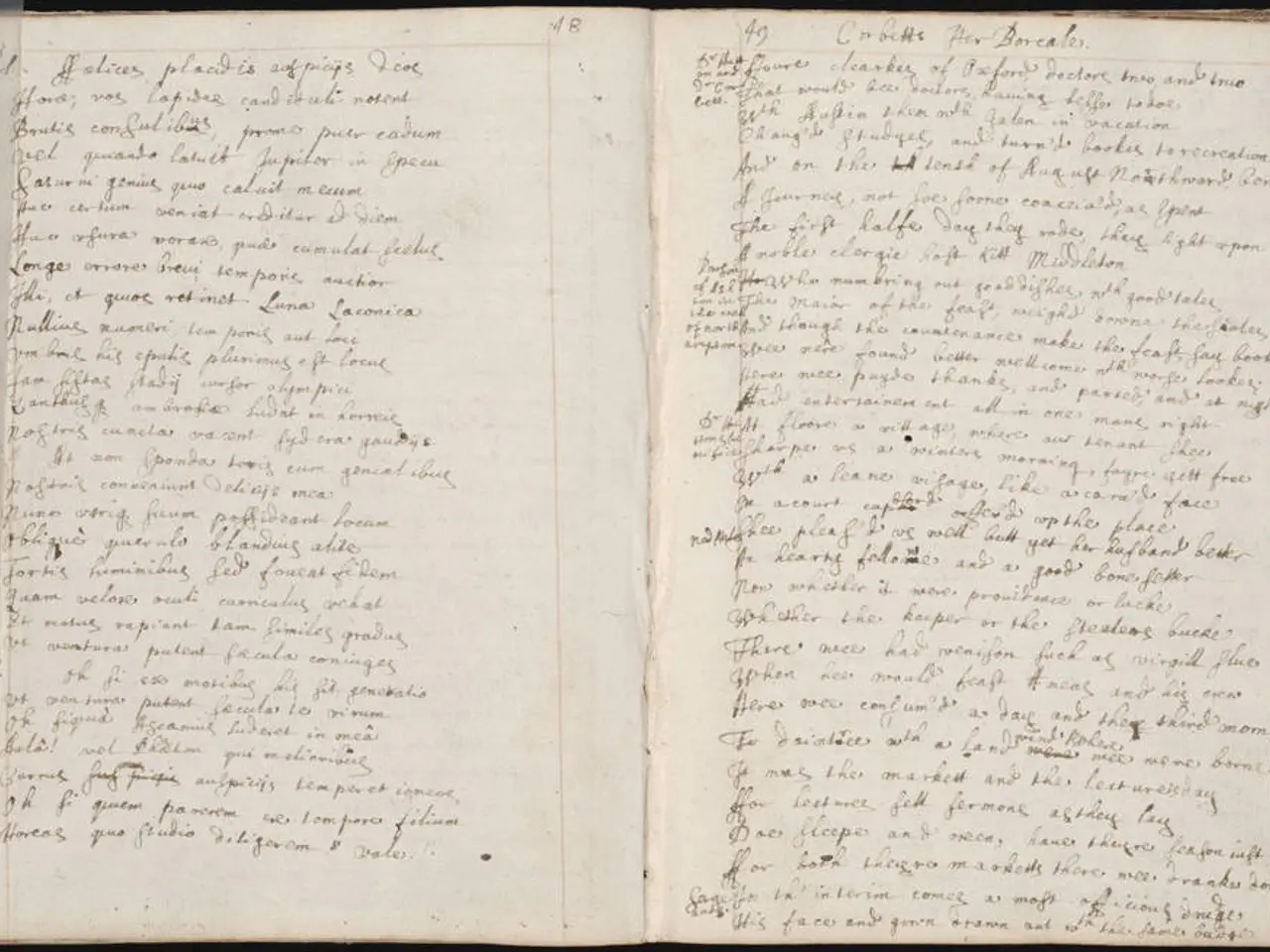Exploring Exposition: Strategies to Compose It Without Alienating Readers
In the realm of storytelling, exposition - the delivery of background information - plays a crucial role in keeping audiences hooked. Whether it's through film, television, or literature, the key is to present this information in an engaging manner that doesn't feel like a lecture.
Take, for instance, the groundbreaking film, The Matrix (1999). The movie reveals information through stages, building a mystery that keeps the audience on the edge of their seats. The exposition is woven seamlessly into character goals, dialogue, visuals, and conflict, ensuring it never feels like a dull recitation of facts.
A similar approach can be seen in Up (2009), where a montage is used to show the decades-long love story between Carl and Ellie. This visual exposition, through costumes, sets, and props, conveys their journey, struggles, and eventual loss in a way that resonates deeply with the audience.
In the post-apocalyptic world of Mad Max: Fury Road (2015), visuals are used to convey information about the water shortage, Immortan Joe's tyranny, and the role of the war boys. By using props, sets, and background action, the filmmakers manage to tell a complex story without bogging down the narrative with lengthy explanations.
Writing exposition in an engaging way is essential to maintaining audience interest throughout a story. Here are some techniques to achieve this:
Techniques for Engaging Exposition
1. Use Action Verbs and Events
Incorporate action verbs and events into your exposition to prevent it from feeling static. This helps keep the narrative moving and engaging, rather than simply listing information.
2. Integrate Emotional Appeals
Appeal to the audience's emotions by including emotional struggles or journeys that characters face. This can help readers empathize with the characters and become more invested in the story.
3. Vary Sentence Structure and Length
Mix short, punchy sentences with longer, more descriptive ones to create a dynamic rhythm. This variety keeps the reader engaged and interested in the narrative.
4. Use Vivid and Active Language
Employ vivid, sensory language to paint a picture in the reader's mind. This will make the exposition feel more immersive and descriptive, rather than dry and informative.
5. Weave in Surprises and Suspense
Introduce unexpected elements or suspenseful situations within the exposition to maintain curiosity. This can be achieved by challenging clichés or hinting at future conflicts.
6. Incorporate Personal Experiences
Drawing from personal experiences can add authenticity to the exposition. It helps readers relate to the narrative and feel more connected to the story.
7. Use Logical and Natural Flow
Ensure that your exposition flows logically by connecting ideas naturally. Use transitional phrases or simple conjunctions like "and" to link thoughts and actions smoothly.
By incorporating these techniques, you can create engaging exposition that captivates your audience and enhances the overall narrative flow.
Remember, exposition should always serve a purpose in the story. It should be as short as possible while still being clear and should serve the story, not stall it. In Inception (2010), for example, new recruit Ariadne is used as a stand-in for the audience to learn about dream-sharing.
Flashbacks, prologues, and withholding information can also be powerful tools for exposition. Narrative exposition, where the narrator tells the audience the information they need to know, and dialogue exposition, where characters reveal information through what they say, are common forms of exposition.
Exposition includes setting, key events, character relationships, cultural context, character goals, and motivations. It refers to any background information essential for the audience to understand a story. In film, exposition can raise questions as well as answer them.
To avoid boring the audience, techniques such as 'Show, Don't Tell', Drip-Feeding Information, Using Character Goals, and Creating Tension Around the Information can be employed. In screenwriting, exposition needs to be externalized and conveyed through action, visuals, and dialogue.
In conclusion, mastering engaging exposition is key to crafting a captivating story. By following these techniques, you can ensure that your audience stays invested in your narrative, feeling as though they are part of the journey, rather than mere observers.
Read also:
- Exploring the Advantages of Outdoor Group Meditation for Enhancing the Mind-Body Union
- Hidden beneath the appealing aesthetic of Consume Me's artwork lies a more ominous nature
- Reflection: Ponder the Fate of City Pigeons
- Sustainable Seafood Consumption: An Examination of Environmental Impact: A Guide for Seafood Lovers





